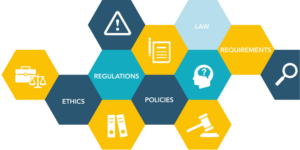
We all know that ediscovery takes both time and money. And to make a case for a new system or technology you need a credible, measurable way to show the return on your investment (ROI) across those resources.
Whether you’re fighting to secure a budget or preparing a cost justification, a return-on-investment (ROI) analysis might be the best way to make the final call on whether to move forward with a new software or get rid of an outdated solution. An ROI analysis is one of the most effective ways to build consensus and support for technology investments. And for those in large organizations, it can be the difference between a project being prioritized or put on indefinite hold. Ultimately, this will help your team decide what needs to be fixed, what it might cost, or what might be working well already.
Why Conduct an ROI Analysis?
There are a myriad of reasons why a company might want to conduct an ROI analysis – knowing exactly what use case you’re trying to solve for before conducting an analysis will be key to making sure you’re successful.
One of the most popular use cases is, of course, costs. Whether you’re trying to secure a budget or you’re cutting back on outsourcing on certain processes, an ROI analysis can quickly identify where and how costs will be saved to prove your point.
An ROI analysis can be the difference between a project being prioritized or put on indefinite hold.
Another popular use case is to to highlight results, afterall if you can’t track it you can’t measure it. It’s crucial to prove that what you’re spending on has been successful and worth the cost. This is closely linked with another reason, which is to prove out existing systems and processes. In-house legal teams can use an ROI analysis to show that the systems they have in place are working and are still worth their budget. This is particularly important for systems that might be older or before your time as your company looks to potentially evolve processes or change technologies.
What are the Main Reasons Companies Should Conduct an ROI Analysis?
One of the most glaring reasons a company might find an ROI analysis useful is that they’re overpaying, or perhaps relying too much, on outside counsel. Oftentimes there are many tasks that outside counsel does that could easily be handled in-house. An ROI analysis shows how technology can help in-house teams reduce spend on outside counsel by bringing more routine ediscovery in-house in order to reserve outside counsel for higher risk or highly complex matters.
Another popular reason is that many in-house legal teams are still using overly complex or outdated software. Oftentimes these cumbersome, difficult to use tools are legacy products–maybe they are on-prem solutions, or just very connected to the infrastructure of the company, which makes it harder for companies to move away from them. An ROI analysis can offer a clear picture of the time and efficiency benefits that would come from making a potentially difficult transition that your organization might be reluctant to go through.
Finally, a lot of companies are still holding on to many manual workflows or processes. Oftentimes these time-consuming processes have been in place for sometime and the idea of spending more to bring a new technology or software in-house doesn’t sound appealing. However, an ROI analysis can be the leverage you need to prove that while you might incur costs upfront for a new solution, the overall savings in the long run will be well worth it.
In conclusion, it’s important to know that everyone’s litigation profile is different. If you’re interested in seeing how an ROI analysis might help your team, read our guide Ediscovery Analysis ROI or sign up for a free ROI analysis with our team! You’ll get an inside look at the free, customized ROI Analysis that Zapproved provides to our customers and how they saw a 65% reduction in legal spend with ZDiscovery.




